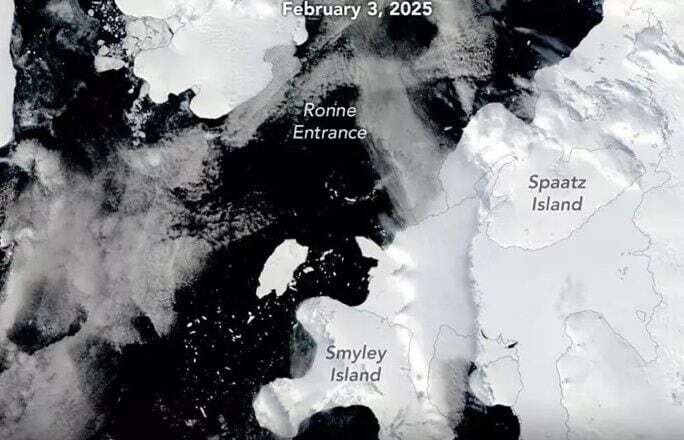
In January 2025, much of the seasonal sea ice had melted, and a new iceberg broke off and was carried away by ocean currents. Retired glaciologist Christopher Shuman from the University of Maryland commented, 'I am impressed by how fast it has moved in the coastal current.' This iceberg, named A-84, has impressive dimensions: 30 kilometers long by 17 wide, similar in size to the city of Chicago.
The iceberg A-84 drifted approximately 250 kilometers in a month from its origin near the southern tip of the George VI ice shelf along the base of the Antarctic Peninsula. This trajectory was captured in an animation created by the NASA Earth Observatory, using satellite images obtained between mid-January and mid-February 2025 through instruments like MODIS on NASA's Terra and Aqua satellites, as well as VIIRS on the Suomi NPP satellite.
The calving of icebergs is a common phenomenon in Antarctic ice shelves. In the case of A-84, a crack in the George VI ice shelf was detected in late 2024, although at that time the iceberg was still surrounded by sea ice at the entrance of Ronne, a bay at the southern end of the ice shelf.
During the austral summer of the southern hemisphere, the iceberg A-84 has been bouncing along parts of the Antarctic coast, leading to reflections on the possible implications of this behavior. The accelerated rate of iceberg calving may be related to warming air and water, as well as the decline of protective sea ice.
The George VI ice shelf has evidenced a gradual loss of ice shelf, which, along with its unique location between the Antarctic Peninsula and Alexander Island, has contributed to its stability. Despite this, concerns about the impact of such calving on the marine ecosystem and environmental balance are increasing.











